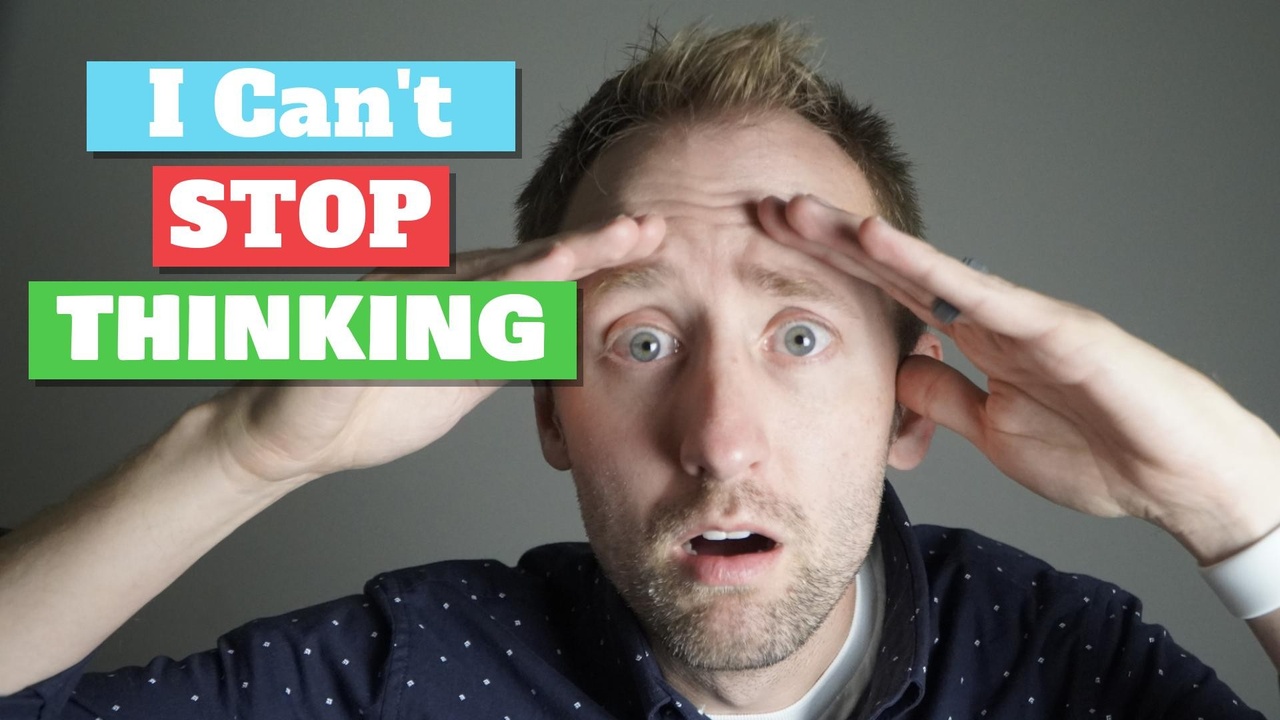Pushing thoughts away? Try This!
Oct 25, 2021
One of the most common questions I get asked is….How do I STOP thinking about my fear? How do I stop obsessing? How do I STOP the anxiety.
If you’re like most, you’re searching videos to learn how to STOP your symptoms. There in lies the TRAP. We don’t learn to STOP thoughts or fears…we learn to respond differently to them….which in turn allows symptoms to decrease.
If you start off you search or mindset with….how can I stop……Don’t do it! It’s a trap!
Seriously. You’re just training your body to continually check To see if you are still having thoughts or not. Which actually produces more thoughts. It is actually natural for the brain to automatically start pushing thought we don’t want. Which is why it takes practice to lave them back.
Let me take you through what to do instead of pushing thoughts away or ignoring them.
So how to avoid suppression? To get out of the thinking that you need to STOP thinking about your fears. Well, you can start by learning to notice when these thoughts occur. Allow thoughts to be thoughts. Not put any meaning to a single thought. A thought is bad or a thought is good. When a thought brings anxiety or distress, we tend to label it as bad. When our brain hears bad, it goes to this automatic process of pushing. Practice having a thought than simply saying, “oh cool, there is the thought again. You’re welcome to stay as long as you want”
As your learning to accept a thought is a thought you’re also practicing not doing a compulsion. A compulsion is anything you are actively choosing to do to remove the thought, or to reduce your anxiety symptoms. For instance, if you have a distressing thought you quickly shake your head to get it to go away. Maybe you tap something a few times. It’s possible you go to the Internet to research different ideas about your thought. You might have to say a phrase for the thought to go away. These are all the things you have to be aware of and stop doing.
Because we cannot accept a thought, take value away from it, and also do a compulsion of the same time. It’s like we’re not fully accepting the reality of the thought. It’s a halfway effort.
Once you learn to accept our thoughts, even if you think it is the worst thing in the world to think. OCD can bring some pretty gnarly thoughts. It’s easy for somebody to say, yeah I can accept a thought about something small but this doesn’t apply to my big scary thoughts. Going back to what was said earlier, thoughts are thoughts. There is not one thought that has more value or power than another.
Some choose to use act therapy. Acceptance and commitment therapy. This builds flexibility in your thinking and allows you to accept the thought. Without changing it whatsoever. At the same time some choose to expose themselves to the triggers or obsessions. This is so you can continually learn. Learn to not respond the way you normally would want to with a thought.
For instance, I might pay attention and write down all the triggers I noticed that bring these thoughts. I might purposely expose myself to them. Not all at once, but starting off with something small. Maybe it’s looking at a picture of something, maybe it’s a video, maybe it’s hanging out with my kid, maybe is driving, maybe it’s cooking dinner, maybe it’s saying a certain word, maybe it’s touching something. Regardless of what it is, you are practicing engaging with this thing, not doing the compulsions, and pretty much acting like you don’t care. Allow the thoughts to come, allow them to leave.
You don’t care how long they stay. They have no value unless you give it value. This takes practice, practice, practice. It is easy for anxiety or OCD to say, this one is important. This one is different. The tools that were just presented to me, do not apply to me.
Let me tell you, your OCD or anxiety is no different than someone else. The next time you think, “I need to get rid of these thoughts. I need to get them to stop.” Remember that we are actually doing the opposite. You can even say, “oh boy, I love these thoughts.” “yes, thanks for coming my way.” “these are amazing!” “I wish you would stay forever.”
These types of responses, help the brain know that you simply don’t care.
Let me know in the comments, what response can you give your OCD and anxiety today when you have distressing thoughts?
Thank you so much for watching, and I will see you next time.
















